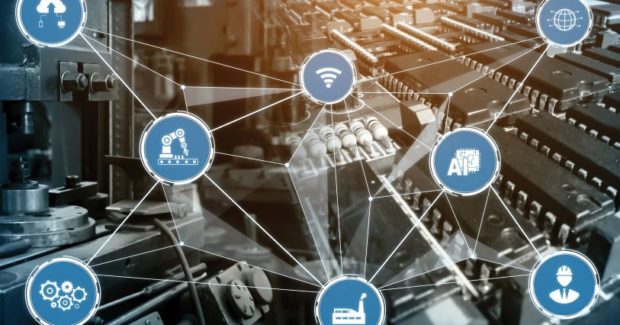Financing for the Next Stage
Machine shops must invest in technology to compete; however, cutting-edge technologies become obsolete sooner, and with a low demand on the secondary market, lenders are reluctant to finance your growth plans. Thankfully, there are a variety of financing mechanisms to consider.
Posted: August 9, 2021
Profit Mastery
By Julie Murphy
Let’s face it: the last 18 months have been a roller coaster ride. And while the circumstances have been less than ideal and exceptionally unpredictable, the future of manufacturing is as bright as ever. It’s time to look forward and plan for the next stage of your business.
Regardless of your current business stage (startup, growth, maturity, renewal), you need money to move the business forward and remain competitive in today’s environment. With the current labor shortages and uncertainty and increasing wage demands, technology is becoming a key factor to remain competitive.
Investment Goals
As you consider what equipment and technology you need, it’s wise to understand the goals you are trying to achieve. What will make your business more competitive or operationally sound? Some common goals include:
- Increased operational efficiencies, capacity, and agility
- Reduced costs: labor costs, process costs, downtime
- Enhanced business systems, infrastructure, and insights
Investment Options
To help achieve your goals, you can employ a number of technologies (or combination of technologies). Some of these include:
- Digitization: also known as the IoT (Internet of Things) or advanced manufacturing technologies
- Software: business or manufacturing, connected devices
- Data and Analytics
- Process or Product Capability Expansion
- Additive
- Lights out and/or automation
- Retooling
- Employee Training and Development
Financing Options
It can be difficult to obtain financing for software, new technology and additive equipment or even retooling your existing plant. Rapid development leads to faster obsolescence and smaller demand on the secondary market, making lenders more reluctant to finance these types of improvements. But there are a variety of financing options available to manufacturers if you have the right lending partner. The options include:
- Equipment Loans
- Working Capital Loans
- Line of Credit (LOC)
- Asset Based Loans
Equipment Loans
A basic equipment loan is when you obtain a loan from a lender to make an equipment purchase. It is certainly beneficial if you have a lender that is familiar with your business and the equipment you are using and acquiring. You select the equipment you want; the lender pays the seller, you take possession of the equipment and make regular payments to the lender until the loan is paid in full. The loan is secured by the equipment being financed and has a defined maturity date.
Working Capital Loans
A working capital loan is typically used to fund short-term business operations or pay for goods and services that are not typically capital investments. You can use your existing equipment as collateral for a working capital loan simply by refinancing the equipment and tapping into the available equity, and the proceeds can be used for other purchases. This is a good alternative if your lender is hesitant to specifically finance software, newer technology or soft or intangible assets especially because the repayment is in installments over time.
Line of Credit
A line of credit is a flexible, revolving loan with a preset borrowing limit. The LOC allows the borrower to draw funds as needed, up to the preset limit. You pay interest only on the actual amount drawn against the line. Principal repayment is typically made when you have excess cash, and because it’s a revolving line of credit, as principal is repaid, the amount available to borrow is replenished by the amount repaid.
Asset Based Loans
An asset based loan is typically structured as a revolving line of credit and is secured by some combination of accounts receivables, inventory, equipment or real estate. Asset based loans operate as a revolving line of credit but the maximum amount available to the borrower fluctuates as the amount of the secured collateral changes. As your business grows, the available credit amount grows.
There are a variety of ways to take your business to the next level, and you have options to fund the growth. Talk with your financing sources to discuss your goals and the investments needed to achieve those goals. A good lending partner will help determine what makes the most sense for your business, both short term and long term.
Paycheck Protection Program Forgiveness
The Paycheck Protection Program (PPP) officially ended on May 31, 2021, and businesses can no longer apply for loans under the program. However, if your company received a PPP loan, you can apply for PPP loan forgiveness because the program allows businesses that received PPP loans to have the loans forgiven instead of having to repay the proceeds of the loan, provided you complied with eligibility and performance restrictions.
Eligibility Requirements and Restrictions
- Borrowers can apply for forgiveness at any time until the maturity date of the loan
- Loans received before June 5, 2020, have a two-year maturity (unless borrower and lender mutually agree to extend the term to five years)
- Loans received on or after June 5, 2020, have a five-year maturity
- Employee and compensation levels are maintained at the same level as when you applied for the loan
- At least 60 percent of the proceeds are spent on payroll costs
- Loan proceeds are spent on payroll costs and other eligible expenses
- The expenses paid with the proceeds were incurred within eight-to-24 weeks of receiving the loan proceeds
How do you qualify for PPP loan forgiveness?
- Funds must be spent within 24 weeks of receipt of the loan proceeds (any funds not spent within the 24 weeks will not be forgiven)
- Full-time staff headcount must be maintained at the same level as when you applied for the loan
- Payroll costs must be maintained at the same level as when you applied for the loan
How do you apply?
Applications forms for PPP loan forgiveness should be sent to your lender, not directly to the U.S. Small Business Administration (SBA):
- Form 3508S – if loan proceeds were $50,000 or less
- Form 3508EZ – if borrowers meet one of the criteria below
- Borrower is self-employed, independent contractor, or sole proprietor with no employees at time of PPP application
- Salaries/wages of employees were not reduced by more than 25 percent and employee hours were not reduced
- The business experienced business reductions because of COVID-related restrictions and did not reduce employee wages by more than 25 percent
- Form 3508 – for borrowers that don’t meet the above qualifications
You must also submit documentation to verify payroll and non-payroll expenses, including bank statements, payroll reports, receipts, cancelled checks, invoices, account statements and more. The specifics are noted on the loan forgiveness application forms.
What expenses are eligible for forgiveness?
- Payroll costs (minimum of 60 percent of the loan proceeds)
- Salaries, wages, commissions
- Employee benefits
- State and local taxes on compensation
- Mortgage interest
- Rent
- Utilities
- Software
- Property damage related to civil unrest
- Necessary supplier costs
- COVID-related protective measures
Deadline
The PPP loan forgiveness application may be submitted any time before the maturity date of the loan. However, for loan payments to be deferred, the application must be made within 10 months from the last day of the covered period.
If, for example, your loan origination date was May 25, 2020, and you had a 24-week coverage period (until November 8, 2020), you need to apply for forgiveness no later than September 8, 2021, even though the maturity date is not until May 25, 2022, if you want to defer all loan payments. If you miss that deadline, you can still apply for loan forgiveness until the loan maturity date, but you will have to make some loan payments in the meantime.
Forgiveness Notification
The SBA will remit any PPP loan forgiveness amount directly to the PPP lender. The lender is required to notify the borrower of the remitted amount. If the loan is not forgiven in full, the borrower is required to repay the remaining amount no later than the original maturity date of the loan. The lender is required to continue to service the loan and provide payment due dates to the borrower.
To ensure that you meet all the criteria required of the PPP loan forgiveness program, check with your PPP lender. Additional resources can be found at the www.sba.gov website under the Funding Programs tab:
The forgoing is for informational purposes only and should not be taken as legal, tax or accounting advice. You should consult an attorney, accountant, or tax advisor and your lender for additional details and information.


















